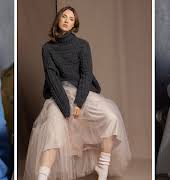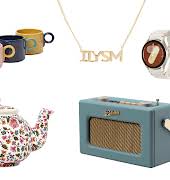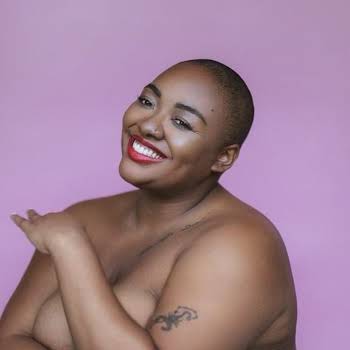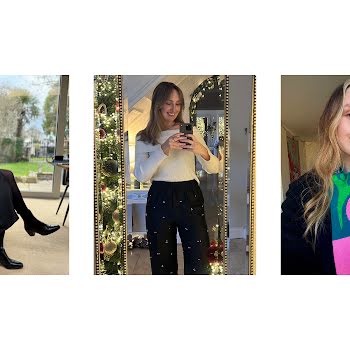
By Marie Kelly
30th Apr 2018
30th Apr 2018
If you haven’t heard of Adwoa Aboah, you’re bound to over the coming months and, indeed, years. e 25-year-old model and activist graced the cover of Edward Enninful’s first issue of Vogue UK last year and is the founder of Gurls Talk, an influential social media platform that promotes an open conversation about women’s issues in an attempt to redress fears and prevent isolation. She walks for every major fashion house and was handpicked by Burberry’s (now former) chief creative officer Christopher Bailey last year to model the brand’s range of neon ready-to-wear accessories. At London Fashion Week in February, she walked for, among others, Ashley Williams, at which I had a front row seat.

Model Adwoa Aboah
That evening, she strolled gracefully but determinedly past me wearing a pair of high-waisted, tie-dyed jeans. She was the epitome of modern beauty: strong, healthy, resiliant-looking, but unique, with her no-nonsense buzzcut and peppering of freckles. There were no angular, jutting hip bones on show to hide my eyes from, or emaciated limbs to make me wince. She filled out those jeans beautifully with a body that didn’t look too different from my own. At 5’8” (several inches shorter than most of her peers) and with a size 8-10 figure, Aboah is a model of her time. She doesn’t have the awe-inspiring Amazonian proportions of the 1990s supermodels, nor the waifish look that propelled Kate Moss to fame and heralded the era of heroin chic. Aboah reflects the current zeitgeist. Just as Moss’s boyish gangly frame was a backlash against the perfectionism of Cindy, Christy and Naomi et al, Aboah reflects the growing boredom women feel with Gigi, Kendall and Bella. Perfection is dull, generic sometimes. Women want to see a reflection of themselves in all their imperfect glory.
At his AW17 show in New York last year, Michael Kors included a plus size model (American beauty Ashley Graham) for the very first time (she featured again this year). Designer Ashley Williams is known to flout convention when it comes to casting models. Last year, she posted a casting call on Instagram for her SS17 catwalk show, explaining that, “I love working with models… however, working within a set formula that has been around way before me can be restrictive.” She added that by casting friends and colleagues in the show, “the clothing was put in a new context”.

Ashley Graham modelling for Michael Kors SS18.
That’s what women need right now. New contexts, fresh perspectives; not just on the catwalk, but on their local high street too. Marks & Spencer is one retailer trying to reconfigure how we think about clothes and sizing with the creation of its Curve collection, a range launched earlier this year for women who are between a size 18 and 32. Specifically branded as Curve rather than the traditional plus size because the former has more positive connotations (the word curvy suggests a Marilyn Monroe-esque shape; plus size has become synonymous with overweight), the collection is design-orientated, offering women of size the same style options and attention to detail characteristic of Marks & Spencer’s mainline ranges.
The importance of rethinking the language and terminology around women’s bodies can’t be underestimated. Watching Ashley Graham walk confidently down the Michael Kors runway this season in a black and white tropical print wrap dress, it seemed ludicrous to think of her as “plus size” or “XL”. She simply looked stunning, and the clothes appeared no less covetable on her than they did on foal-like Edie Campbell or the athletic-limbed Carolyn Murphy. She also walked the Prabal Gurung and Christian Siriano runways this year with fellow curve model Candice Huffine; the latter runway show ranked as one of the most diverse catwalks of the season.

Candice Huffine modelling for Christian Siriano SS18.
Michael Kors was the biggest show Graham had ever walked in, and she commented last year that within this one show, “ There’s age, there’s size, and there’s ethnicity… It’s the wave of the future.” Perhaps part of this future also involves not just rethinking the language around size, but the numbers behind it too. I read an article in The Guardian a few years ago, which suggested that numerical sizing (10, 12, 14, etc) should be abolished and a more female-friendly system put in place whereby a size 16, for example, would be called a Burlesque, a size 14 the Marilyn (or maybe the Ashley?). Wouldn’t it be life-affirming to choose a dress from the Marilyn category than a plain old 14? Similarly for petites, picking up a Kylie rather than a size 6 would make you feel instantly more womanly, wouldn’t it?
Standardised sizing has been the scourge of women since it was first introduced in the early 20th century, along with mass-produced corsets (made-to-measure was going out of fashion). Corsets were sold for three different body types – stout, average and slender. They’re pretty narrow categories, and I’m not sure whether “stout” or “average” is a more depressing box to tick. How many of us are a standard size anything, be it a 10 or 20? Which one of us can boast perfect proportions from our shoulders to our toes? And even those who can will find their size differs from one store to another. A Topshop size 10 doesn’t have the feel-good factor that an Armani size 10 does.
Zara is my own go-to high street store, and I have every size from XS to XL in my wardrobe. I choose the size of each garment on a very pragmatic basis. How do I want the piece to drape or sit, and which size will achieve that? So for instance, if I want a pleated skirt to hang that little bit longer (I find midi length is the most flattering cut on me), I buy one or two sizes up and let it hang on my hips. If I want a slightly shrunken look and feel to a sweater, I go down a size or two. Age is a great leveller, and since I’ve entered my forties, I’ve been able to offload much of the emotional baggage surrounding that notion of “official dress size”. In my twenties, it defined me. Every time I tried on an item of clothing in a changing room, I stood in judgement over myself. Size really did matter then, regardless of how arbitrary.
Positive representation improves self-worth. This nugget of truth should be the fashion industry’s steer right now. And next time you’re under the harsh spotlight of a department store changing room, remember you’re trying on a Marilyn, not a mundane off-the-shelf size 14.























